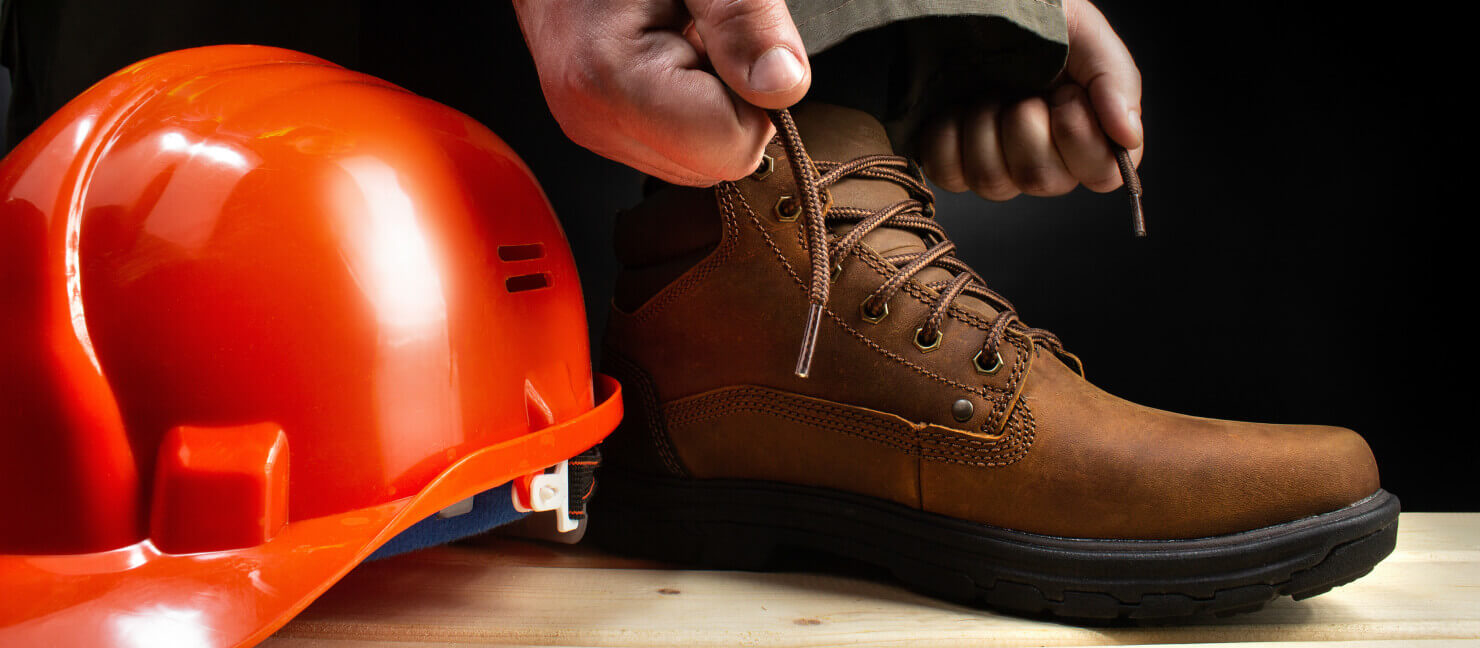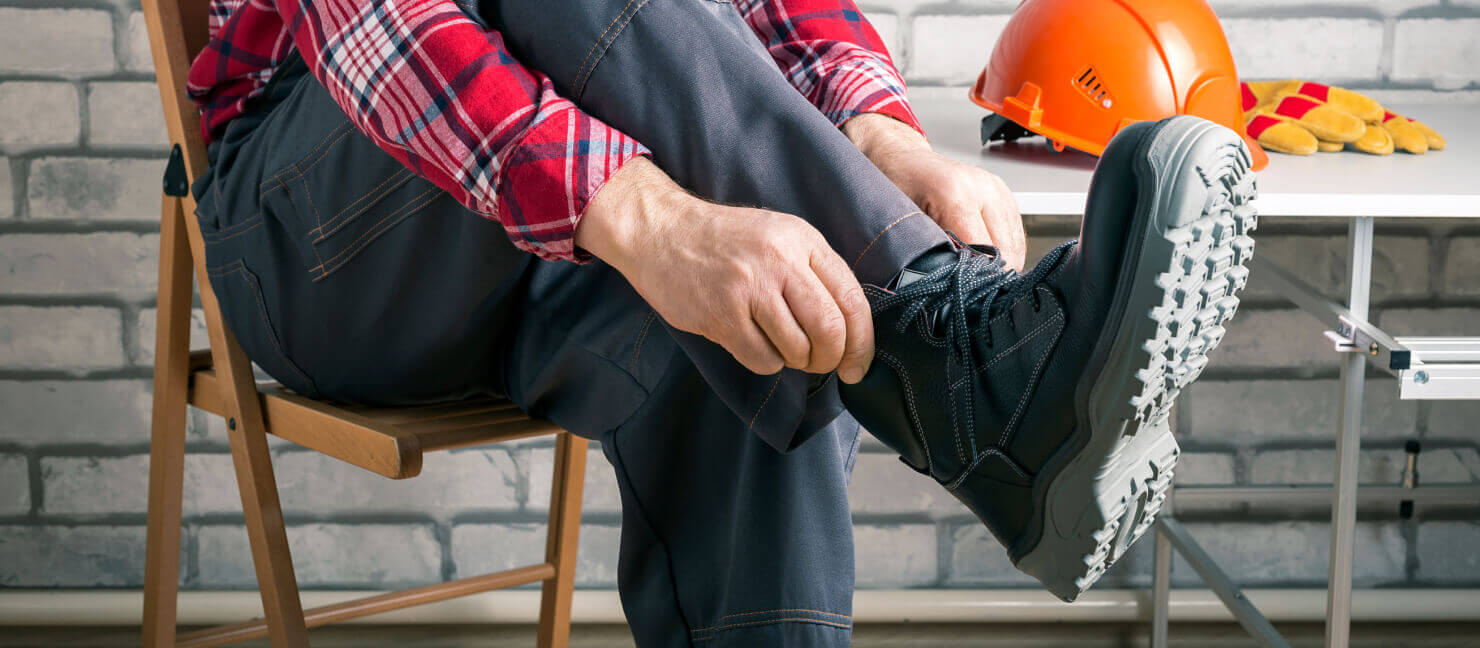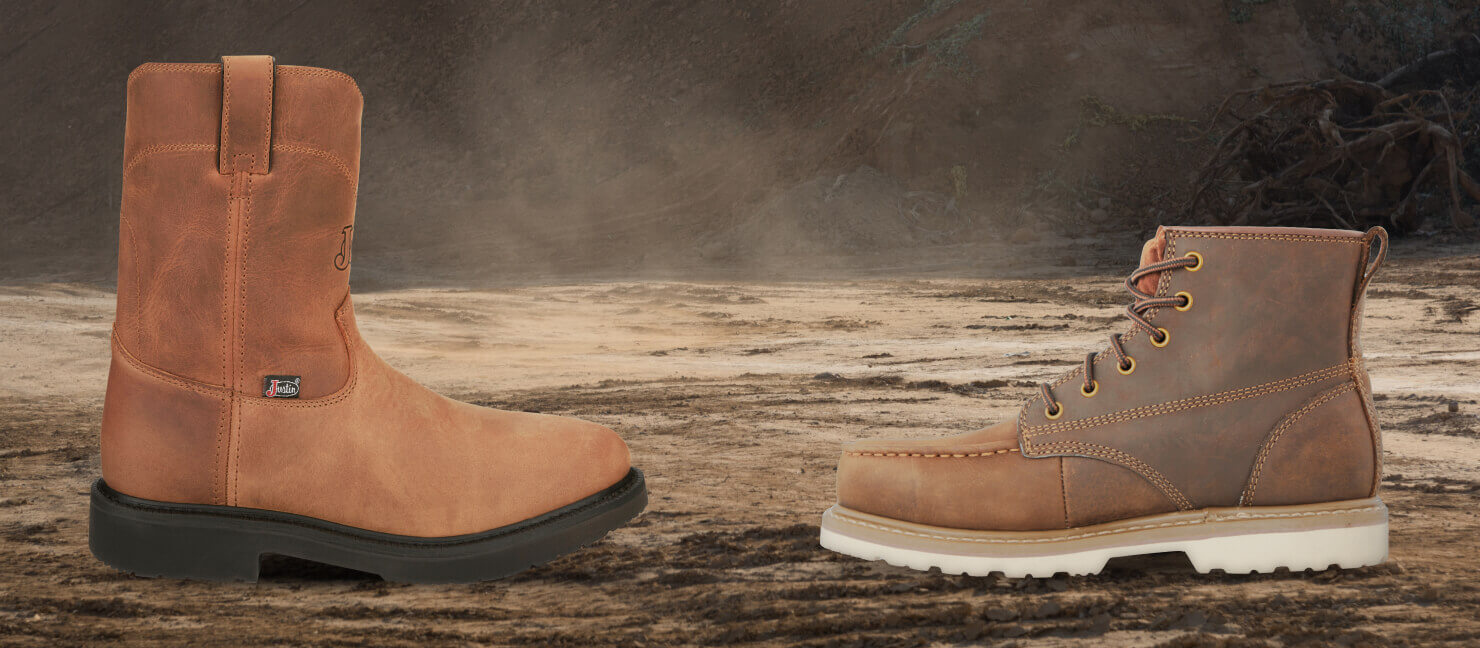How Should Work Boots Fit?

Finding the right fit for work boots can make a hard day’s work much easier. However, boots that don’t fit properly can cause foot and back pain over time. We partnered up with Justin Boots to bring you tried and true ways to find the best-fitting boots. Whether you are shopping for men’s boots or women’s boots, this comprehensive guide for finding the right size and style of work boots is for you.
Key Takeaways
- Why Finding the Right Fit Matters: Finding the right fit for work boots can reduce the risk of blisters, chafing, fallen arches, and plantar fasciitis. The right work boots prevent injury and increase comfort.
- How Should Your Work Boots Fit? Work boots that fit correctly should be roomy in the toe box, snug in the heel, and provide arch support and cushioning for daily work activities.
- How to Measure Your Feet (Step-by-Step): The best way to find boots that fit is to measure your feet before making a purchase. After measuring your feet, compare the dimensions to various brands’ sizing charts to determine your size.
- Pull-On Work Boots vs Lace-Up Work Boots: Pull-on work boots are a convenient, lightweight option, while lace-up work boots are more supportive and versatile.
- How to Make Your Work Boots More Comfortable: Breaking in new work boots can be a slow process. However, trying different socks and insoles can help your new work boots fit truer to the shape of your feet.
Why Finding the Right Fit Matters
Properly fitting boots reduce the risk of blisters and chafing caused by feet moving around too much.
Boots that are too small can cause ingrown toenails and restrict blood flow. Meanwhile, boots that are too
big and lack support might cause fallen arches and plantar fasciitis.
When work boots fit right, the built-in flex point will align with the natural bend of your foot. This
aids in comfort and reduces the risk of injury on the job. Adequate arch support in boots helps you
maintain balance and supports your body, preventing joint and back pain.
Boots that fit well also wear down more evenly on the outsole (bottom). Work boots are designed to resist
damage in specific areas based on typical walking patterns. In other words, a good fit ensures your boots
last a long time.
Expert Tip:
If your job requires a lot of standing, you may need a slightly larger size to accommodate foot swelling. Choose a size that allows for natural fluctuations in foot size throughout the day.

How Should Your Work Boots Fit?
So, how can you tell when you’ve achieved the best fit in your work boots? Work boots that fit well should be snug and supportive without causing pinching, pain, or pressure. You should be able to move your feet around slightly inside the boots. Consider the following factors related to each part of the boot:
-
Toe Box: Leave at least half an inch of room in the toe box to prevent blisters on the front or sides of your feet. The ball of your foot should also align with the widest part of the sole of the boot. If you bend the front of a boot, it should flex between where your toes and the ball of your foot go. That’s called the ‘flex point.’
-
Arch: Choose work boots with durable arch supports that keep your feet in a neutral position. The midfoot area should have enough support to prevent overpronation or ‘flat feet.’ Avoid arch supports that are too high, causing underpronation, and putting too much pressure on the outside edge of your foot.
-
Heel: When trying on a new pair of work boots, make sure your heels fit snugly yet comfortably. The boot should provide heel support and cushioning for daily work activities. Lace-up boots will have less movement in the heel, but pull-on boots may need up to half an inch of slippage in the heel for easy removal.
Expert Tip:
Wearing moisture-wicking socks of medium thickness can decrease heel slip, prevent blisters, and provide cushion, making your work boots more comfortable.
How to Measure Your Feet (Step-by-Step)

If you’re not sure what size work boot you wear, there are a couple of ways to measure your foot to take the guesswork out of finding the right fit. The easiest way to measure your foot is to use a Brannock Device, but if you can’t find one or go to a shoe store, all you need is paper, a pen or pencil, and a ruler. Here is a step-by-step guide:
-
Step 1. Measure at the End of the Day: Wait until the end of the day when you’ve been working or on your feet. Your feet naturally expand during the day, so it is best to measure them at their largest size.
-
Step 2. Wear Socks: Wear your usual work socks to get an accurate measurement. If you have more narrow heels or usually experience some heel slip in your boots, wearing thicker socks will give the boots a more snug fit.
If you plan to wear insoles or custom orthotics in your shoes, consider purchasing a larger size or opting for a lace-up boot that can be loosened to put your insoles inside. -
Step 3. Use Paper for Tracing: Find two pieces of paper bigger than your foot. You can tape them to the floor to keep them from moving. This step ensures an accurate measurement and mimics the stable, flat insole of a boot.
-
Step 4. Place Your Feet on the Paper: If you’re able to touch your toes, stand with your feet on the paper to trace. Otherwise, you can sit in a chair and lean forward to put more weight onto your feet. This will mimic the pressure on your feet when standing.
-
Step 5. Trace the Outline of Your Feet: Trace the outline of your feet with a pen or pencil. Keep the pencil upright to trace the outer edges. If the pencil is at an angle, then your measurement might be too large or small, resulting in the wrong size.
-
Step 6. Measure the Length with a Ruler: Use a ruler to measure the longest part of the outline, from the tip of your toes to your heel. Round to the nearest sixteenth of an inch to make it easier to convert the length to your shoe size. If one of your feet is longer than the other, use the longer measurement.
-
Step 7. Use a Chart to Convert Length to Shoe Size: Look up a men’s or women’s boot size chart for various work boot brands. Compare the measurements to find the closest match to your size. Remember that sizes differ slightly by brand and you should round up instead of rounding down if you’re between sizes.
Expert Tip:
If the brand of shoe you’re looking for doesn’t include a width chart, you may want to try the boots on. The average width for men’s boots is ‘D’ and women’s is ‘B.’ Extra wide is usually listed as ‘EE.’
Pull-On Work Boots vs Lace-Up Work Boots

When selecting the perfect pair of work boots, pull-on and lace-up boots offer different advantages. To help you decide, we’ve created a full comparison of the two styles.
Pull-On Work Boots
Pull-on work boots are convenient shoes with a flexible opening and pull tabs. Some styles have elastic panels or zippers on the sides. Their reinforced toe caps, heel counters, and puncture-resistant soles are built to withstand rigorous work environments. While used across various industries, they are most popular in agriculture and manufacturing.
Pros
|
Cons
|
Lace Up Work Boots
Lace-up work boots have adjustable laces that can be tightened or loosened according to your needs. Because of this, they are great for tasks that require agility or traversing uneven terrain. Lace-up work boots are most popular in the construction, mining, and forestry industries.
Pros
|
Cons
|
Pull-On Boots vs Lace-Up Boots: Key Differences
| Pull-On Boots vs Lace-Up Boots | |||||
|---|---|---|---|---|---|
| Category | Pull-On Boots | Lace-Up Boots | |||
| Comfort | Typically prioritize comfort and use padded insoles and flexible materials | Typically prioritize safety, potentially making them less comfortable | |||
| Arch Support | Less customized arch support | Fit adjustability provides greater arch support and options for insoles | |||
| Durability | Less stitching and no laces make them last longer in rugged environments | Eyelets and laces may wear over time but provide more security | |||
| Weight | Typically built to be lightweight | Typically heavier | |||
| Fit | Less adjustable with a looser fit | Customizable fit; usually more supportive | |||
| Convenience | No-lace design, elastic, flexible materials, and pull tabs make them easy to put on and remove | Laces, stiff materials, and snug fit make putting on and removing take more time | |||
| Breathability | Lack of openings tends to trap heat and moisture | Customizable fit and boot tongue enable heat and moisture to escape effectively | |||
| Versatility | Less versatile with less support makes them potentially hazardous for some work activities | Adjustability, snug fit, and greater support make them suitable for diverse work activities | |||
Expert Tip:
Do your feet get hot easily? Consider purchasing a breathable lace-up work boot as long as it meets the safety requirements of your workplace.
How to Make Your Work Boots More Comfortable
After buying work boots in your size, the next step is to break them in to make them more comfortable. Start by walking around for a few minutes to identify areas that feel too snug, uncomfortable, or loose. Try the following methods to adjust the fit of your boots:
-
Use specially designed insoles or custom orthotics that conform to the shape of your feet and provide the best support possible.
-
Experiment with sock thickness to add or remove cushioning as necessary.
-
If you are wearing lace-up boots, try different ways to tie the laces to ensure your boots have a snug but comfortable fit.

You’ll want to break in your boots gradually and pay attention to any areas that rub or feel uncomfortable. If you continue to have foot discomfort while wearing your boots after a week or two of breaking them in, you may need to swap them for a different size.
Have Fun Out There!
Ready to step into something more comfortable? Academy Sports + Outdoors has a wide selection of pull-on or lace-up work boots, including composite-toe and steel-toe boots. Remember to find some quality work socks as well. Shop online or visit us in-store today to find your perfect fit.


